Digital will grow 10x more in 2022, predict industry experts
This trajectory of digital transformation and adoption continued to take big leaps during 2021. Right from the rise of new content formats, growing popularity of short videos, and cryptocurrencies sparking conversations about the future of finance, to the new identity of Facebook embracing the metaverse and creators earning from Instagram. Everything took place in a year where people continued to be mostly confined to their homes.
The pandemic has accelerated trends that were already fundamentally reshaping the economy, and will continue to do so. Zenith forecasts 14% growth in global digital adspends in 2022, up from the previous forecast of 10%, followed by 9% growth in 2023 and 10% in 2024.
While 2020 was a period of learnings and 2021 of adapting to the new normal, 2022 is expected to be a bit tricky.
Digital experts do a recap of the key developments in this industry in 2021, capture the momentous trends, and forecast the upcoming digital currents in 2022, towards which the digital industry is currently gravitating.
Shrenik Gandhi, CEO and Co-founder, White Rivers Media:
“Evolutions in the Digital sector in 2021
With a deeper penetration of mobile Internet into Tier 2 & 3 cities, ‘Bharat’ joined ‘India’ in the digital world to stay connected and entertained through 2021. As the year progressed, so did the awareness, confidence and spendings of the country’s consumers. Facilitated by the widening digital marketplace, Indian retail rode a wave of change into the next phase of its growth this year.
The creative revolution in short-form vertical video content changed the way Indians harnessed content. The advent of regional influencers was driven by brands being increasingly selective in capturing a niche, regional audience.
Vernacular content captured a huge share of media feeds, supported by an equivalent demand from native audiences. Global platforms picked upon this shift and began adding several local Indian languages to their platforms in an attempt to make themselves more accessible and relevant.
Dominating trends
Brands humanised the way they interact with, and/or react to, their communities between 2020 and 2021. Experiential marketing climbed the incline, with a keen weightage on social listening. Various social intelligence tools have remarked the importance of smart decision-making, backed by changing customer needs. The social intelligence market seems to be expanding and maturing with in-house processing of the routine analytical work, and partnered efforts to uncover deeper strategic insights. Data-driven creative storytelling has initialised deep-impact communication at scale.
Given the risks of contact, and a shift to the work-from-home culture, chatbots expanded their conversational capabilities to fill the gap between sellers and buyers. A milestone year, indeed, where consumers are more accepting of chatbot-led query resolutions.
Newer interactive ad formats dominated the market this year and delivered a more one-on-one, personalised experience. Interactive videos, social media lenses, voice search ad-formats are a few trends that paved the way for a more connected, intent-based communication this year.
Digital forecast for 2022
Birth of the Internet gave way to the Age of Websites, which witnessed the rise of league players such as Google, Yahoo and Amazon. Web 2.0 was brought along by social networking sites, such as Facebook and YouTube, and the user-generated content that was being published on them.
Next in line is Web 3.0; an Internet, where services will run on blockchain and ownership of data will be decentralised. As far as these predictions go, publishers and advertisers will gradually establish independent CDPs, DMPs, and unique audience identifiers to benefit brand partners.
In 2022, social commerce and livestream shopping will become mainstream, while contextual targeting will be more sophisticated than ever before. Driven by MarTech innovations, advertisers will be able to achieve new milestones in personalisation of content, be it in any format.
Virtual spaces and experiences are predicted to set the tone for digital-first brands in 2022. Consumers are increasingly dabbling with opportunities to own, build, and grow assets in the digital world. The monumental rise in awareness, and subsequent participation, in the context of Cryptocurrencies and Metaverse was only the beginning.
Virtual spaces, digital houses, personalised avatar-based virtual meetings, and virtual apparel & collectibles will become more accessible and acquirable in the near future. The real world is gearing up to seamlessly blend with multiple virtual realities. With 5G and constantly evolving AI/ML technology, the upcoming decade will be adequately furnished with the tech infrastructure required to do it.”
Siddharth Devnani, Co-Founder & Director, SoCheers:
“The big names made big waves
Firstly, Apple decided to go for prioritising user privacy and severely limiting advertisers access to targeting users, with the new restrictions on cookie tracking. This was a technology that defined the success of performance marketing in the last decade, and millions of brands came on digital to leverage this for a high marketing ROI. Joining the wagon Google (Chrome and Android) has been working on its FLoC (Federated Learning of Cohorts) for a while now. These changes are likely to heavily impact performance marketing. Although in the best interest for users, most brands will see a drop in their ROIs except for those (a handful) who are ahead of the curve in ad-tech.
Next up was Facebook renaming itself to Meta – implying a shift in their focus, specifically towards leveraging the rapidly advancing technology being employed in mobile cameras and sensors (like Lidar). Moreover, consumption and creation of Augmented & Virtual Reality (AR/VR) content is on the verge of getting democratised. We have seen some brilliant use of Instagram filters and Snap-Lenses for campaigns, virtual product launches and events over the last 2 years, and it’s only bound to increase.
So, from innovating on targeting alternatives to continue delivering great ROI on digital as compared to the traditional channels, along with investing in AR/VR technology and content, I strongly believe that all the above-mentioned steps taken by the big tech conglomerates are expected to manifest at their best in the years to come.
Fostering shirt-form videos
The short-form video format experienced an upsurge with Instagram Reels, YouTube Shorts and Snap's Spotlight followed by the launch of start-ups like MX Takatak & Moj leveraging the TikTok ban and quickly grabbing onto the talent which developed there. In fact, these newly launched platforms gave a tough competition to the well-established global tech-giants owned platforms. And, early on these platforms were massively dominated by influncers but eventually, some brands were also seen testing the waters with a few integrations.
Looking at its massive growth and evolution, it can be fair to say that many more advertisers/ brands would be seen leveraging it for ads and promotions. So, here’s to seeing how the platform-creator-user ecosystem moves forward in 2022 and how these platforms expand their avenues. It’ll be even more interesting to note, seeing how ‘Reels’ increased their video-span to 60-secs and TikTok (globally) to 3- minutes.
The good kind of leftovers
There are some trends that started amidst the pandemic and continued well into 2021, proving that all they needed was a push.
Work-From-Home set-up: One of the most talked about! The increased demand for permanent remote roles, backed by overdue movement from last year when everyone played it safe, led to a massive movement of talent in the advertising & marketing industry recently.
The explosion of e-commerce: The brands were seen shifting gears initially and leveraging its potential to the best of their capabilities. Currently, it being settled, we foresee that it’s here to stay, with most categories continuing to grow as fast as the pre-pandemic rates.
The shift to OTT (Over-The-Top): Accelerated with the top players smartly launching mobile-only plans, spends on AVOD (Advertising-based Video on Demand) shot up.
QR Codes: A comparatively old technology, it made its presence felt in 2020 with digital menus and mobile payments. Successfully continuing to 2021 with brands experimenting with it again on packaging, OOH, and other channels.
At the same time, a new technology came into the mainstream – NFTs (Non-Fungible Tokens) – which hasn’t yet been explored to its full potential, but might pick up in the coming year.
Sidharth Singh, Co-Founder, CupShup:
“For a country as diverse as India, consumption as varying as salt to software and behaviour encompassing a scrooge to splurge, the objects are clearly visible mostly in the hindsight. This strange yet fascinating country ranks at the fag end of spectrum at inequalities yet adopts digital payments at scale. It mixes superstition in day-to-day life yet ditches vaccine hesitancy and goes for mass vaccination.
While 2021 has been a momentous year for the country and the business, to predict the trends, we can look at changes that have happened at following levels: Societal, Behavioral and Consumption, in that order as change at one level leads to another. Let’s look at each of them to understand it in detail.
As a society, we have emerged much saner from the year. While we had to pay a huge price for the lesson, we as a generation have been rudely reminded that this model of centralised growth limited to pockets of urban areas isn't sustainable. The reverse migration is here to stay and the brain drain, which has happened within the country, has redistributed talent across geographies, albeit at a much smaller scale than needed. This means creation of a new ecosystem, much bigger and better market and a society that prefers sustainable living to breakneck growth.
In a parallel universe, this also means following a K-shaped recovery which means wealthier becoming more wealthier and distribution of power in limited hands. The Inequality report points out that the top 1% of the world's wealthier people already control 38% of world’s wealth and are getting richer at an unprecedented speed. For the digital industry, the year gone by has shown only the glimpse and with easier access to markets, savings pooling into equities and the government pushing its reform agenda, the decade that is going to follow will play out the entire movie and it is gonna be a blockbuster one for India and hence the industry!”
Dina D’Souza, Vice President - Monetization, Trell:
“The pandemic has accelerated the overall adoption of digital technologies by several years. Most of these are here to stay for the foreseeable future. 2021 saw mobile first apps & tech products gaining immediate acceptance with people who accessed them from the comfort of their homes.
The nationwide lockdown not only led to an increase in online consumption of news, entertainment & sports content but also saw an exponential surge in online shopping.
E-commerce transactions surged by 80% between 2020 and 2021 with transactions from the Tier 2 & 3 cities. This phase also gave rise to content creators who amassed huge followers and gained instant credibility and trust that influenced user purchase decisions & brand preferences. Mid of 2021 saw conversations and global demand for privacy on digital platforms. This led to the phasing out of 3rd party data and got brands to reinvent & rethink their data strategies for the cookie less world.
Trends to look forward to in 2022
- Influencer marketing
The Influencer marketing industry is growing at a 25% CAGR YoY and is expected to reach a size of Rs 2,200 crore in 2025. Today, influencers from across India have a strong connection with Gen Zs & the Millennials, especially in the Tier 2 & Tier 3 markets. They are trusted by their followers and can easily influence their purchase choices by creating content in regional languages. Over 50% of India’s digital audience is from the Tier 2 & 3 markets and this share will only grow further in the coming year. Brands will find more value in partnering with the Influencers as their brand evangelists and create custom communication in vernacular languages to gain inroads into smaller towns & newer markets.
- Social & video commerce
India has about 800+ D2C [direct to consumer] brands which have been launched & built entirely on digital platforms over the last few years. Consumers are searching & discovering brands through rich formats which combine audio, video & meaningful content. India has 448 million social media users, 500 million online video consumers and close to 110 million online shoppers. 2022 will see D2C & legacy brands build their image through video content and increase investments on social media platforms that can enable sales. 2022 will also see a lot of innovations in this space with live commerce, augmented reality & virtual reality driving immersive & engaging online shopping experiences.
- Brands embracing new forms of advertising
2022 will see newer forms of advertising and integrations as brands gear up to explore opportunities to connect with audiences in the virtual world. Emerging digital natives are already familiar with the concept of the metaverse, though the term itself might be unknown to them. They will continue to spend more time creating digital avatars & identities to connect with people for work & leisure in the virtual world. Brands will need to understand this shift in behaviour and incorporate it in their marketing plans. They will need to think of brand strategies that help them co create virtual experiences for their audiences.”
Neha Puri, CEO & Founder, Vavo Digital:
“2021 saw digital transformations in terms of social media platform upgrades which revamped the influencer marketing game. Thanks to Instagram Reels, YouTube shorts, and live streaming sessions, Influencers could create more innovative content which was not very time-consuming for the audiences. There was a rapid growth in terms of the demand for micro and nano influencers as the brands could harness huge advertising potential with limited budget and targeted reach.
Additionally, with the widespread acceptance of social media and the increasing user base, 2021 was a year that marked the turning point for the influencers and advertising with their integration into business models for rapid growth and sales. Newer advancements in the Indian marketing scenario included the rise of virtual influencers, and these fictional characters grabbed huge attention which helped the brands to understand the vast potential of social media and newer influencer marketing models. With such advancements in both research and technology, 2022 will see further expansion of the influencer marketing sector to adapt to the changing business needs. Application of AI and ML in social media platforms will be another advancement that will affect how the content is produced and communicated by the influencers amongst the audience in 2022.”
Ajay Trehan, CEO and Founder, AuthBridge:
“Digital onboarding emerged as the number one trend in 2021 as remote work became the new normal. After a shaky Q1 marked by lockdowns, hiring freezes and layoffs, we saw a large-scale movement towards technology that enabled contactless and paperless hiring, verification, and onboarding in Q2 and Q3. As providers of these new-age solutions backed by automation, APIs and AI, our business grew in direct proportion to the rise in demand. Instant ID and identity checks supported by OCR and image recognition, Video KYC, database-driven criminal checks, and geo-coordinate-based address checks emerged as top solutions. Our digital signature solution saw an industry-agnostic rise in demand.
In 2022, we expect the digital onboarding space to continue its growth momentum. With the threat of Omicron lurking outside and the strong potential of the virus to mutate in the future, a hybrid work model will be the way forward at least in non-essential services. We can even expect innovation in sectors like retail, manufacturing, and agriculture to encourage remote work as far as possible.
Organisations across non-essential, technology-friendly sectors will look to build on the strong technology foundation laid in 2021 and continue to direct efforts towards scaling up. Personalisation of onboarding journeys for employees, customers and users will be a huge differentiator. The focus will be on providing mobile-first, end-to-end digital experiences that seamlessly connect stakeholders across geographies. Technologies like voice-based authentication, liveness detection, gesture-based authentication, video verification, digital signatures will explode on the onboarding scene in India, along with a strong demand for these technologies to learn to be humane and promote diversity and inclusion, especially in the Indian context.”
Angad Singh Manchanda, CEO & Co-founder, Chimp&z Inc:
“As the pandemic continued to affect the world, the trend of digitizing services and marketing strategies adopted by companies accelerated in 2021. Amidst all the chaos, we witnessed a continuous change in social media algorithms. One thing that stood out was the creator’s economy. It is expected to escalate opportunities for influencer engagement and communication. Furthermore, 2022 will be a year for gamification and blockchain service integration in digital marketing. This will lead to an increase in the creation of more and more NFTs by focused brands. One trend to look up to in 2022 would be animated conversations that brands shall venture into with 3D characters and interactive storylines for digital promotions. Audio and podcast marketing are also in their expansion stage. All of these trends are just the tip of the iceberg. There is a lot more to come.
The buzz around 5G is getting massive attention day after day. As the 5G network evolves, it will prove to be a major driver of expansion in IoT and other intelligent automation applications. However, it may not be on the path of creating a revolutionary impact on the digital industry. It will surely add up to more efficient and faster communication with an increased bandwidth compared to 4G. But it is a gradual process.
Curiosity rises when we look at the impact it would create on the Metaverse. The metaverse is all about AR and VR, it’s more about stepping out into the world and enhancing it, and 5G when it arrives will be a welcome change for the new technologies evolving. The potential to create a tight-knit environment is enormous and can lead to further innovations for improved customer experience and engagement. I see the new year bringing in a lot of Animated 3D content to be consumed and 5G will only add to the experience. Overall, I’m looking forward to 2022, which I believe will be an epic year for digital marketing.”
Harikrishnan Pillai, CEO and co-founder, TheSmallBigIdea:
For IoT to start impacting digital marketing strategies on a large scale, two components need to fire in substantial form. One in the sizeable integration of technology in end-use hardware across multiple connected devices and second is making technology affordable for mass adoption. We envisage a lot of work happening in both these areas. From a consumer stand-point we see a lot of disruption waiting to happen in wearable tech and household appliances. Impact of IoT in B2B advertising will also be significant. Especially in sectors like agriculture, healthcare, we see a lot of adoption and hence subsequent impact. However, unless tech integration in end-use hardware and affordable tech isn’t the norm, large level monetization or impact on advertising will stay a desire. Another substantial third dimension to the integration of IoT and advertising is the rising awareness around data privacy and the control being given back to the users to select what data they are willing to share. However by 2025, we see IoT and connected devices become a critical part of advertising to a certain segment in the society.
“5G will ensure that data is available to users with low latency and higher throughput, leading to an overall improved connected experience, both from a richer user experience standpoint and also content accessibility. That would mean that entertainment through gaming, OTT, short form video apps will end up being the pivot when it comes to time spent and hence will become a crucial input to the marketing plan. Also due to the low latency, experience dampeners like buffering will be a thing of the past making the content to ad transitions more seamless. It will make immersive advertising more accessible, have the ability to show richer ad units and make shoppable ads a more experiential reality.”
Raghav Bagai, Co-founder, Sociowash:
“2021 was a roller-coaster, but sanitize your hands before you hold tight onto your seat belts. From starting the year with the second wave of COVID-19 to ending it on an Omicron note, we saw the challenges that were posed to brands, especially in rethinking their strategies. With the rising number of cases, we saw the shift in marketing trends move towards brands redefining themselves and working to add value to society. Brands started focusing on empathizing with their messaging and building it around people. They moved from talking about themselves and went the extra mile to be relevant. From finding beds to creating forums for accessing hospital information, brands went all out to be more humane in 2021. All in all, last year was a game-changer for the industry. In terms of trends, the humane side of brands and growth in content creators within everyone out there saw a rise. Influencer marketing was a side that saw a major glow up and is no longer just another tool in social media marketing but a full-fledged leg of digital.
From Multiverse to Metaverse, 2022 is the year to expect innovation, leaps in technology, and Artificial Intelligence (AI). The world took the last two years to build a virtual world and advancements in technology are anticipated in the coming year. Avenues are broadening for influencers and digital platforms and advancements like NFTs, virtual weddings, fashion shows, will evolve and improve in 2022. Recheck your seat belts are still tight enough for the crazy ride next year is going to be.”
DP Vishwakarma, Founder, Keywords Fly:
“If anything good has happened after COVID-19, it is people’s thinking towards digital and people started to involve the digital world in the business. This brought a big change in 2021 regarding our work culture. We are able to do more work in less time, talk about b2b business, people used to give more preference to physical meetings. Those who were more motivated about traditional marketing. But now, running a marketing agency has become very easy for us now.
In selling digital services and helping clients digitally. I hope we can grow 10 times more in 2022. Because now people do not have to be educated to move digitally.”
Dinesh Juneja, Founder, Emporiom:
“Incredible in one word. We grew our business by at least 20-25% in 2021 with existing clients and very interestingly were approached by earlier clients and potentials. The core requirements revolved around how to become digital-ready, inducing technology in business operations, or driving revenues using online mediums. The acceleration of D2C businesses also contributed to our growth numbers and will see us invest further in E-Commerce offerings. Coupled with that, we are in the beta stages of launching a couple of digital products that can assist our service offerings and offer more visibility to our clients around their marketing investments.
Irrespective of the size of the firm, brands need to start looking at Digital and Technology together in 2022. With the pandemic fast-tracking idea of digitization, the earlier there's the adoption of the concept, the faster will be the probable growth of the business. This begins with having an open mind and a willingness to change. Seems simple but is one of the toughest things to realize in firms that have a fixed school of thought. If there's a want to question the status quo, technology adoption, automation in business processes and the need to keep data at the center becomes easier. And 2022 is going to be all about that and more.”
Amit Dhawan, Head of Business (Delhi) & Media Sciences, Schbang:
“The convergence of IoT and AI/ML solves two major life problems of a digital marketer – gives them the ability to understand the customer like never before and provides a platform to reach out to the customer at the time of need. What we're witnessing is a shift from blanket advertising to razor-sharp, need-based, personalized marketing. Another way to look at this, and how this is expected to change trends is that since the targeting is super precise, the complexity and level of competition among brands offering the same products/ service would be much higher. The only way to win will be to provide real value. So, another transition we can expect is a shift from ‘high bidding’ to ‘high value’.
5G is transforming the advertising industry and powering new types of ad experiences, like AR and other immersive formats, in order to stay relevant and engaging for customers. The changing norms of data privacy and cookie tracking have significantly reduced the number of 1-to-1 addressable devices and limited the opportunities to target or directly re-engage customers. Advertisers thus need to focus even more on the creative experience and shift to ad formats that do not require user-level data for ads to be highly engaging.”


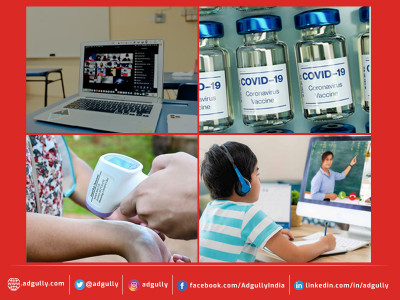
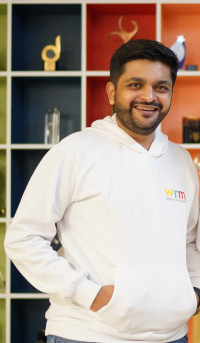

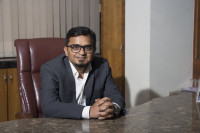










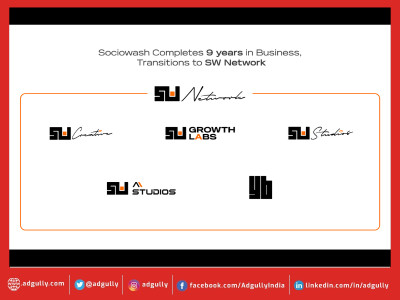


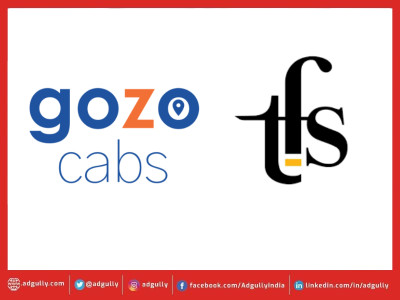


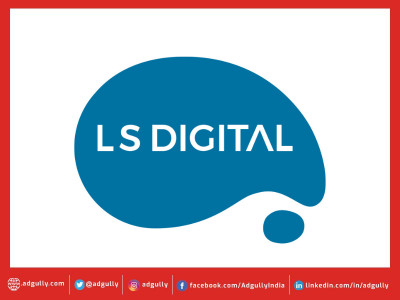

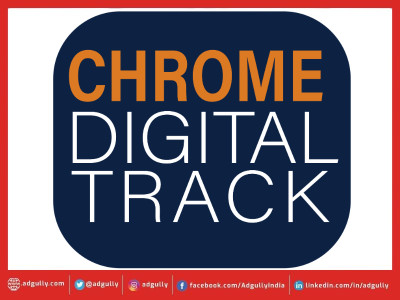


Share
Facebook
YouTube
Tweet
Twitter
LinkedIn